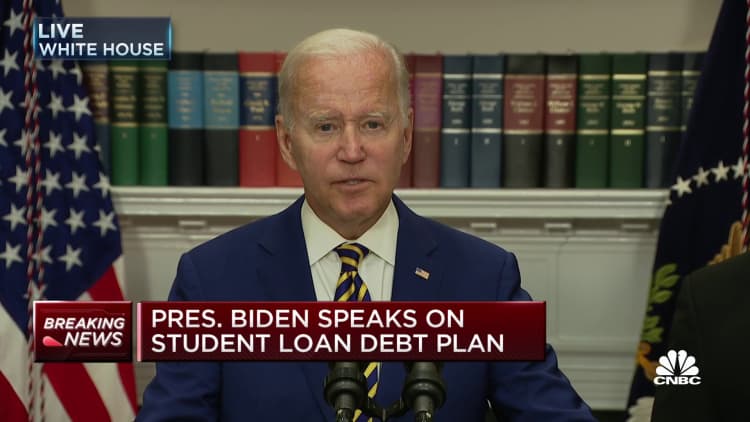How to get refunds for student loan payments you made since March 2020
Fizke | Istock | Getty Images
There is good news for the millions of people on federal student loans who have made payments on that debt during the Covid pandemic: Many of them are entitled to a refund of the money.
The US Department of Education says many borrowers eligible for President Joe Biden’s student loan forgiveness plan who made payments on their debt during the pandemic hiatus on the bills will be automatically reimbursed. The relief directive has been in effect since March 2020 and is scheduled to end on December 31.
According to the government, more than 9 million people made at least one payment on their federal student debt between April 2020 and March 2022. The vast majority of borrowers failed to make payments, taking advantage of the suspension of bills and accruing interest.
Here’s what borrowers need to know.
How might a refund help?
By requesting a refund, you can ensure that you receive the full amount of forgiveness that you are entitled to. Forgiveness is limited to the lower of your qualifying federal student loan balance or $10,000 ($20,000 if you received a Pell grant).
If you made payments during the pandemic that took your balance below the forgiveness number you would otherwise qualify for, a refund could ensure you receive full relief.
It also gives you some cash in hand that you can use for other goals.
What payments are refundable?
Payments made since March 2020 on federal student loans eligible for the payment pause are now expected to be reimbursable, said higher education expert Mark Kantrowitz.
The approximately 5 million student loan borrowers who hold commercially held Federal Family Education Loans (FFEL) were not eligible for the payment pause and are not eligible for a refund.
Any payments made prior to the pandemic are also ineligible, Kantrowitz said.
How do I request a refund?
Not all borrowers are required to apply for the refund, said Elaine Rubin, senior contributor and communications specialist at Edvisors.
The refund process is automatic for borrowers who are eligible for student loan forgiveness and for those who made voluntary payments during the hiatus that brought their balances below the maximum forgiveness amount: either $10,000 or $20,000, Rubin said.
“The difference will be refunded to them automatically,” Rubin said.
More from Personal Finance:
Borrowers in these states may owe student loan forgiveness taxes
Here’s how to prepare for kids if your company cuts paid vacation pay
Inflation fears are spurring buyers to look forward to the year-end holidays early
However, if you paid off your loan in full during the pandemic, you need to take action and recover the payments.
Borrowers who have refinanced their federal loans must also ask their student loan administrator for the refund, Kantrowitz said.
Even if you think you’re entitled to an automatic refund, you should call your servicer and request it, Kantrowitz said, to make sure you get it.
How much can I get back?
Borrowers should be able to “get back everything that’s been paid since March 13, 2020,” said Betsy Mayotte, president of the Institute of Student Loan Advisors, a nonprofit organization.
Should I definitely request a refund?

Not necessarily, said Mayotte. The goal should be to achieve the greatest level of forgiveness that you are eligible for.
“Only borrowers who have repaid their balances to an amount less than what they believe will be forgiven should consider a refund,” she said.
If you’ve made payments during the pandemic but still owe $40,000 in student loans, there’s no point in asking for a refund, she said, “since you’ll still owe a balance after debt relief is applied.”
The reimbursed payments will increase your loan balance and possibly your monthly payments, according to the Department of Education.